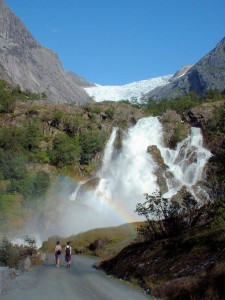by: Courtney Remacle
For many of us, an interest in sustainability is coupled with a love of nature and an urge to be outside. How often do we find ourselves feeling more calm, more centered, more whole when we have the opportunity to be out in nature? The therapeutic benefits of spending time outdoors are well–documented. However, once you consider the travel to and from popular outdoor destinations, the gear you use to engage in outdoor activities, and what you eat while you’re on trail, your environmental impact can add up quickly.

Image via freerangestock.com
The As Sustainable As Possible (ASAP) model was developed by Northland College faculty and students in 2007 to help evaluate the relative sustainability of backcountry travel excursions. The model draws its framework from The Natural Step and is broken into three broad categories: Location, Equipment, and Food. In each category, a series of questions is asked and then points are awarded based on answers. Examples of questions from the ASAP model include:
Renewable Materials:
Renewable materials are grown and harvested in sustainable manner. Be sure to research the materials to confirm that they are in fact sustainable; some production processes may require the use of large amounts of other materials which would make the “renewable” product unsustainable.
2 points – made out of 100% renewable materials or materials that come from an organic producer
1 point – made out of 25% renewable materials and less than 25% of materials are non-sustainable products, such as petroleum based products
0 points – made of primarily non-sustainable products renewable products
Distance:
The distance traveled directly affects the impact on the environment; by minimizing distance you minimize impact. If you are using a form of transportation that is human powered, no matter the distance, award yourself three points.
3 points – less than 25 miles round trip
2 points – 26 to100 miles round trip
1 point – 101 to 500 miles round trip
0 points – 501 or more miles
To evaluate your trip, answer each question and give yourself the appropriate score for your response. The goal is to have as high of a score as possible. While the model is not perfect or all-inclusive, it’s a good tool to get you thinking about the sustainability of your outdoor travels. The background of ASAP and the entire model can be viewed here.
